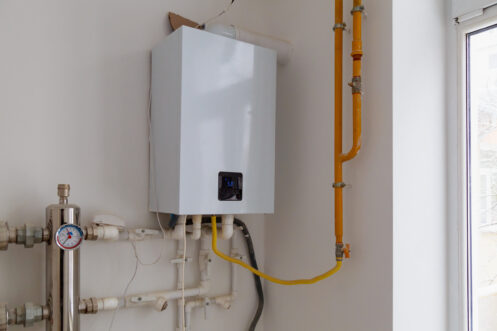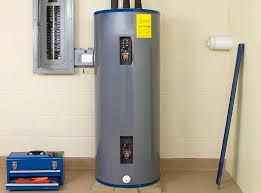This post down the page relating to Water Heater Maintenance Tips You Can't Afford to Forget is particularly motivating. Have a go and draw your own personal assumptions.

Hot water is essential for everyday convenience, whether it's for a refreshing shower or washing recipes. To guarantee your hot water system runs successfully and lasts much longer, routine upkeep is crucial. This post supplies functional ideas and insights on exactly how to preserve your home's hot water system to avoid disruptions and pricey repair work.
Intro
Maintaining your home's warm water system may appear complicated, but with a couple of simple actions, you can guarantee it operates efficiently for years ahead. This guide covers everything from recognizing your hot water system to do it yourself maintenance ideas and understanding when to contact professional aid.
Relevance of Maintaining Your Warm Water System
Regular upkeep not only expands the life expectancy of your hot water system yet likewise ensures it operates effectively. Ignoring upkeep can bring about decreased effectiveness, higher energy costs, and even early failure of the system.
Indications Your Warm Water System Requirements Maintenance
Understanding when your warm water system needs focus can avoid major concerns. Keep an eye out for indications such as inconsistent water temperature level, unusual sounds from the heater, or rustic water.
Understanding Your Warm Water System
Prior to diving into upkeep jobs, it's helpful to recognize the basic parts of your warm water system. Typically, this includes the hot water heater itself, pipes, anode poles, and temperature controls.
Month-to-month Maintenance Tasks
Normal month-to-month checks can assist capture minor problems before they rise.
Purging the Hot Water Heater
Flushing your water heater eliminates sediment accumulation, enhancing efficiency and extending its life.
Checking and Changing Anode Rods
Anode rods prevent deterioration inside the storage tank. Evaluating and changing them when worn is crucial.
Evaluating and Readjusting Temperature Level Settings
Adjusting the temperature setups guarantees ideal efficiency and security.
Do It Yourself Tips for Maintenance
You can execute a number of upkeep tasks on your own to maintain your warm water system in leading problem.
Looking for Leaks
Routinely check pipes and links for leaks, as these can bring about water damage and greater expenses.
Checking Stress Alleviation Valves
Examining the stress safety valve guarantees it works correctly and prevents too much pressure buildup.
Insulating Pipelines
Shielding warm water pipes decreases warmth loss and can conserve energy.
When to Call a Professional
While DIY upkeep is helpful, some issues call for professional competence.
Complicated Problems Calling For Expert Aid
Instances include major leakages, electrical problems, or if your water heater is consistently underperforming.
Regular Specialist Upkeep Perks
Expert upkeep can include comprehensive evaluations, tune-ups, and guaranteeing conformity with security requirements.
Verdict
Regular upkeep of your home's warm water system is necessary for efficiency, durability, and cost savings. By adhering to these ideas and recognizing when to seek expert aid, you can make sure a trustworthy supply of warm water without unanticipated disturbances.
Water Heater Maintenance Tips
Test the TPR Valve
Shut off the power and the cold-water supply valve. Place a bucket under the pipe connected to the temperature-pressure-release (TPR) valve on the top or side of the tank. (This valve opens if the tank pressure gets too high.) Lift the valve’s tab to let some water out, then let go. If water keeps flowing, drain the tank partway, unscrew the old valve with a pipe wrench, and install a new one. Check the Anode Rod
Put a hose to the tank’s drain cock and let out a few gallons of water. Now fit a 1 1/16-inch socket onto the rod’s hex head on top of the heater (or under its top plate) and unscrew the rod. If it’s less than ½ inch thick or coated with calcium, buy a new one, wrap its threads with Teflon tape, put it back in the tank, and tighten securely. Use this segmented rod if headroom above the tank is limited. Drain the Tank and Wash Out Sediment
Drain the remaining water in the tank into the bucket, then stir up the sediment on the tank’s bottom by briefly opening the cold-water supply valve. Drain and repeat until clean water comes out of the hose. Close the drain cock, refill the tank, and turn its power back on. Adjust the Temperature
Find the temperature dial on the side of the tank and unscrew its cover. Adjust the dial to 120 degrees using a flathead screwdriver. For every 10 degrees the temperature is lowered, you can expect to save up to 5 percent in energy costs. Turn the water heater off or the thermostat down to its lowest setting if you plan to be away from home for more than three days. Insulate the Pipes
Buy some self-sticking 3/8-inch-thick foam pipe insulation that matches the pipes’ diameter. Slide the foam over the hot-and cold-water pipes as far as you can reach. Insulating the cold-water pipe prevents condensation in summer. Peel the tape and squeeze the insulation closed. If the pipe is 6 inches or less from the flue, cover it with 1-inch-thick unfaced fiberglass pipe wrap. https://www.thisoldhouse.com/plumbing/21016402/how-to-maintain-a-water-heater

Do you like reading up on How to Maintain a Hot Water Heater in a Few Simple Steps? Post a review below. We would be glad to find out your reactions about this write up. We hope that you come back again soon. Sharing is good. Helping others is fun. We thank you for reading our article about Water Heater Maintenance Tips You Can't Afford to Forget.
Click Here